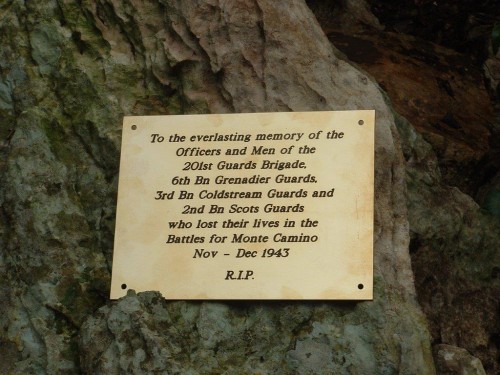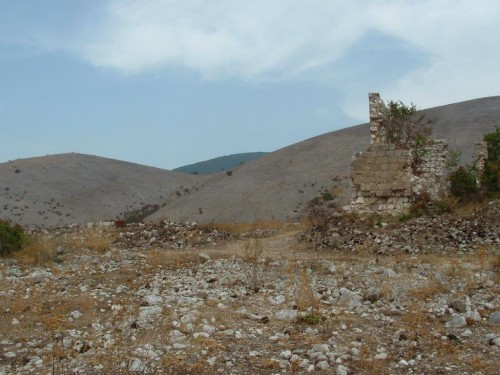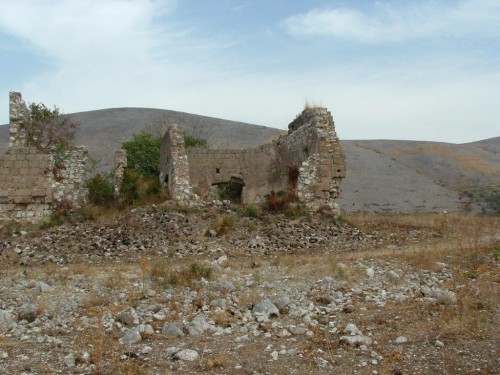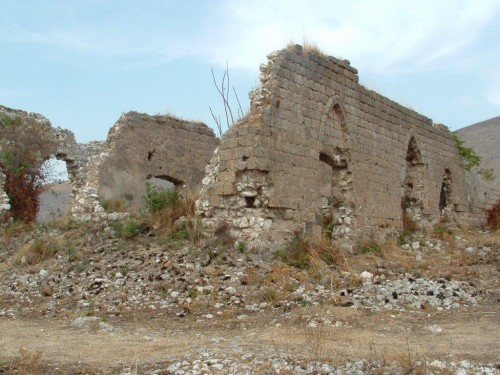A Brief History of the 6th Battalion Grenadier Guards
6th Battalion Grenadier Guards
A brief history by Michael J. Sterling whose uncle (Lt George Beale) was a member of this Battalion, incorporating an account written by Lt C M Wheatley (Platoon Commander, No. 2 Coy).
The Battalion was formed in the year of 1941, under the ever watchful eye of its ‘Mentor’ Lt/Col Archer Clive. M.C. The nucleus of the Battalion came from the Chislehurst Detachment of the Holding Battalion and two hundred additional men came from Windsor. Few of these men, and only thirteen of the thirty two Officers, had seen previous active service, and the majority had been engaged during the past year in guarding vital points in the Home Counties and London area, where they had had few opportunities for training and had forgotten much of what they had learned at the Guards Depot. Although the Battalion was the youngest of all the Grenadier Battalions, it gained a few notable ‘firsts’ over its sister Battalions.
On the 16th January 1942 the Colonel of the Regiment, H.R.H. Duke of Connaught died. 40 years earlier he advised his brother, King Edward, not to get involved in the controversial case involving one of the Country’s greatest Generals (the authors’ opinion) Major General, Sir Hector MacDonald or ‘Fighting Mac’ as the great British public had christened him. Now the Colonel was gone and a new appointment had to be made, and so on the 24th February 1942, H.R.H The Princess Elizabeth became the new Colonel of the Regiment and in May of that year, Her Royal Highness honoured the 6th Battalion by carrying out her first inspection of her Grenadiers.
On the 9th September 1943 the 6th Battalion was the first Grenadier Battalion to set foot on European soil since the ‘Debacle’ of Dunkirk when they landed on the beaches of Salerno.
On the 14th June 1942 the 6th left Caterham for Liverpool on the first stage of their long journey to eventually join the 201st Guards Brigade in the Middle East. Their posting was Syria with orders to guard the border and protect the oil pipelines at Kirkuk, following this posting they joined General Montgomery’s troops in North Africa. They were trained as “Motorised Infantry” quick reaction in desert warfare, later they questioned this training when they reached the mountains in Italy!
In March 1943, only sixteen days after leaving their base in Qatana they joined the leading troops of the famed 8th Army under General Montgomery and leaguered that night just behind the gun lines. Four days later the youngest Battalion of the Regiment was engaged in the first battle of its history – The Battle of the Horseshoe – Mareth Line.
Prior to the battle the battalion was visited by General Montgomery who arrived in his converted ‘Honey’ tank, he gathered the Battalion around him and in his inimitable way invited all to take part in one of his ‘parties’ “You will all enjoy my parties” he is reported as saying; the survivors of that terrible night would have a different opinion.
In a single night of battle the battalion lost:- 16 Officers killed, 5 wounded, 5 Officers were missing or prisoners of war. Other ranks suffered 76 killed and 109 wounded and 3 missing or prisoners of war. This was due to a massive mine field plus misinformation, they were told that the objective was lightly held when in fact it was held by the elite 90th Light Division. It emerged later that the Battle plans had been captured two days earlier, a fact known to the high command who still allowed the attack to go ahead, which meant the German defences knew who was coming at them, where they were coming from and when. It is reported, but cannot be confirmed, that when General Montgomery was told about this his answer was that he would rather lose a Battalion than a Division. The 6th Btn Grenadier Guards was a diversionary attack to allow the New Zealand Div to carry out a left-flank movement a favourite tactic of Montgomery’s. The casualties suffered by the 6th Btn that night was a wound that cut deep into the heart of the Battalion and could have been the end as a fighting force for any lesser Regiment. Following the eventual cessation of hostilities in North Africa the Battalion re-equipped and absorbed the new replacements of those lost at Mareth.
In September 1943 they were part of the vast invasion force laying off the coast of Salerno in Italy, now serving in the 5th Army 201st Guards Brigade, and as mentioned earlier they were to become the first Grenadier Battalion to set foot on European soil since Dunkirk. They were now part of the ‘Black Cats’ 56 Div 201st Guards Brigade 5th Army under the American General, Mark Clark.
Their struggle had begun, from the beaches of Salerno to Battipaglia and up the treacherous mountain spine of Southern Italy, every inch of land contested by their adversary who had had time to build fortifications into the rock faces and were masters in the art of defensive warfare. On the outskirts of Salerno they came across their first “Mountain”, Monte Tabora, they were not trained in Mountain warfare and suffered losses once again, but they pressed on and eventually arrived at Caserta where they were stationed in the palace. Here they carried out training to cross the River Volturno which was fast flowing with steep sides, on the far bank were German forces. The Guards practiced in flimsy boats on the palace lake which was calm and shallow. The American Pioneers eventually built a bridge across the Volturno allowing the Guards to cross there, it does not bear thinking about the carnage that would have occurred if they had attempted to cross the river in boats.
From Caserta and Capua across the River Volturno they fought, the weather was worsening every day – whoever coined the phrase ‘Sunny Italy’ would get short shrift from the men of the 6th Battalion. Little did they know then but they were also to become famous by belonging to the ‘D Day Dodgers’ a remark made by Lady Astor in a fit of pique.
They carried out another attack in a place called Rochetta e Groce and Pignataro just North of Caserta and to the right of Highway 6, with No 2 Coy capturing the hill 960. Sadly during this episode a “Blue on Blue” occurred between the Grenadiers and the 2nd Btn Scots Guards part of the 201st Guards Division. The Scots guards approached from the wrong direction in the early dawn, shots were fired and an unknown number of casualties occurred – such is war.
In November 1943 they were to arrive at their next bloodying – Monte Camino or ‘Murder Mountain’ as some called it. Prior to the battle they were told it was ‘lightly held’. The men of the 6th Battalion had one word for the report, the same as the ‘Horseshoe’ report at Mareth. Before dealing with the battle of Camino in detail, it is necessary to give a brief account of the events leading up to it, because what the men of the 6th Battalion had done and how they had done it is all part of the story of Camino.
(This is an account written by Lt. C M Wheatley of the 6th Battalion Grenadier Guards)
At the end of dinner on the night of 13th October 1943, news came through that the Battalion would not be called upon to do an assault crossing the Volturno. Another Brigade was committed and spirits rose, for the brigade had been practising the crossing on the lake at the Royal Palace, Caserta, for the past few days. On the 15th October, the Brigade made a successful crossing at Capua and the Battalion moved over by an American Bridge about two miles East of Capua. On the same night the 6th Battalion took over from the Americans on Monastery Hill – the first ‘Tit’ on a ridge of hills terminating in points 860 and 819 as the horizontal stroke of a “T” (819 not to be confused with Camino 819).
No. 3 Coy were heavily mortared the next day and suffered some casualties but otherwise little happened. On the 16th October, the Battalion concentrated below ‘Monastery Hill’ prior to attacking Table Top. This operation involved three companies (2, 3 and 4). It was cheap in casualties and they took a number of prisoners. A German sniper aiming at Lt. Charles Williams missed him, but unfortunately killed the Guardsman behind him. Lt .Mike Sainsbury went out that night in search of the sniper and Spandau but failed to get at close quarters with them – he did, however, discharge his 2” Mortar and came back with a couple of German blankets as loot.
The Battalion now had a foothold on the ridge and it was just a question of leapfrogging along. No.2 Company came through 3 Company early next morning and that evening 3 Company were ordered further along the ridge. The next day 2 Company moved down the hill on the East, placing them South East of Point 860, and 1 Company, who had been in reserve, came up to help 3 Company clear the ridge. No.4 Company was, I think, in the area of Battalion Headquarters on the West ridge. When No’s 1 and 3 Companies reached the end of the ridge, there was an exchange of fire and some ‘stonking’ but little else. The Battalion sat in these positions for two days facing Point 860 and having a good view of Rochetta e Groce. For the first time in 4 days, some of the men went down the hill, where they were able to get a wash and a shave.
On the night of 21st October, No’s 1 and 3 companies moved 300 yards west to a forming up area, where they had a few hours sleep before attacking their designated target. No 2 Company under Command of Major Potter did an excellent attack on their designated target and the rest of the Battalion were all relieved to hear, after a considerable amount of firing, “Cushy No 2” being blown from Point 860 – this was their success signal. No.1 Company got to their objective successfully but were counter-attacked late in the afternoon – both sides suffered some casualties. While No’s 1 and 2 Companies were carrying out these attacks, No’s 3 and 4 Companies were going round the base of Point 860 with the intention of going across the ‘Saddle’ and attacking.
No’s 3 and 4 Companies came across some badly sown mines on the track and when they were nearing the ‘Chapel’ caught site of some of the Enemy. Two sections were ordered to deal with this situation when orders were received from the Company Commander with the aid of a ‘38’ set that ordered Major Hanbury (4 Company) to go and support Major Potter (2 Company) on Point 860. Major Cook was told to marry up with Captain Marsham (1 Company) on Point 819. No 3 Company got badly lost on this operation and it was not until just before last light that Lt Willis met them half way up 819 and led them like a ‘Fairy Godmother’ up to No 1 Company H.Q.
No 3 Company had left the forming-up area some two hours before first light and had walked continuously all day. They had eaten their haversack rations for breakfast and on reaching No.1 Company positions found that food and ammunition had been unable to get through. With no food, water and being ‘dog tired’ they prepared for the night. Little happened during the night, but a couple of deserters came in at first light.
22nd October dawned with glorious sun shine, and after they finished burying No. 1 Company’s fallen – on an empty stomach – they were delighted to hear that a track had been found to Battalion H.Q., thereby opening a possibility of food in the near future. By noon stomachs and weapons were replenished after a 36 hour fast. That evening the Companies came down the hill to take up the positions the Scots Guards had captured the previous night. It appears that the Scots Guards were ordered to take No’s 3 and 4 companies objectives – in fact, just as no 3 and 4 Companies were leaving the Chapel area, the leading Scots Guard Company appeared on the track. A good deal of firing took place and a severe number of casualties were suffered, but by first light the next morning all objectives were secured. The highlight of the 860 and 819 operations, as far as spectacle was concerned, was an excellent display of dive bombing by the R.A.F. Their target was Rochetta e Groce – a typical mountain village built to house a vast number in a minute space. The houses were built so close together that if one house was to collapse it seemed inevitable that the others must follow suit. When the R.A.F had finished, our Mediums and Heavy’s of the Artillery tidied up, there was scarcely not a brick left standing on another. Rochetta e Groce suffered the fate of hundreds of similar villages and towns the length and breadth of Italy, San Pietro Infine being just one of them. The Battalion took over the Scots Guards positions on the 24th October and the Scots Guards moved to the left flank. The 6th Btn stayed in these positions, holding the line for several days.
The Battalion was called upon to find a 72 hour patrol – Lt Leeke and Lt Wheatley tossed for it, – Lt Wheatley won, he drew rations (American ‘K’), selected his men and recced the ground. All was set for the night of 27th October, but at lunch time the Commander ordered by ‘38’ that he would like Lt Wheatley to go out with a Scots Guards patrol who were covering a bit of the area, he therefore reported to the Scots Guards command post where he met Lt ‘Daisie’Tunnard who had arrived from Cairo a couple of days before and was feeling a bit ‘parkie’ to say the least. The intention was to recce a bridge and a river. Lt Tunnard and Lt Wheatley together with a Scots Guard Corporal, set out at 13.00 hrs armed with 2 x .38s and a Tommy gun, they got to the bottom of the hill and were informed in a village that the enemy were in front and that in their opinion, it was ‘No Buono’. Ignoring this, the patrol went through the village and were nearly shot by an American. It appears that the Americans decided to send out a mounted patrol (30 Americans, 30 Horses, armed to the teeth and making as much noise as a couple of Sherman tanks). With their bland disregard for patrolling boundaries, they had encroached on the Guards area. The American Officer confirmed that he had received the same report as the Guards, that there were enemy in the area. It was decided that both parties should ‘Team Up’. The American Officer and 3 men with the Guards patrol decided to recce the immediate area to their front, the remaining American party remained in the sunken road. Halfway to the railway line they split forces, the Americans 50 yards to the left, the Guards straight ahead.
The Guards patrol swarmed over the railway line and were surprised to spot some men to their left. Astonished at first, but brought to a sudden halt, by a burst of Spandau fire, 2 x .38s and a Tommy gun against a Spandau 10-to-1 on, they lay flat and discharged their three fouling pieces to keep their spirits up, the scene stayed thus for a few minutes, then a new and pleasant sound came to their ears. The Americans had got to the left of the enemy and were firing into their backs. When firing ceased, the Guards patrol rushed forward to find 4 corpses and a Spandau. They stayed on the scene for a few more minutes in time to see the German Platoon of which the Spandaus were a part, forming up for a Platoon attack. It appears that there were two arches under the railway line, each guarded by a Spandau, they had seen us coming and one crew had gone to compare notes with the other. While they were doing this, the Guards patrol had crossed the railway line between the two positions. It was decided that the Guards patrol would join the American main body and eventually parted company to rejoin their respective Battalions.
From the village of Pignataro the Battalion marched seven miles and spent the night concentrating in some fields. They moved the next day to a “Long Stop” position on a low ridge. No 3 company stayed in these positions in the pouring rain for a couple of days and had eight shells fired at them, six of which were dud! The Battalion then moved into reserve to await the propitious moment to attack Monte Camino. When the Battalion moved into reserve it really only moved up into another field! For the five or six days that the Battalion was waiting to concentrate for Camino, the Companies, including the Officers, were living in holes in the ground – its damn cold and rather wet in Italy at the beginning of November!!
There you have the atmosphere leading up to Camino. For the last 16 days and nights the Battalion had lived on the top of the hills, they had done two full scale Battalion attacks and had been in contact with the Enemy for the past 16 days. They had lived on compo rations the whole time, seldom having enough water with which to wash and shave. They had had a negligible amount of hot meals because there were no means of cooking on top of the hills, and they had not been in a house for a month. They were hardened and in training for rough work, and it was, perhaps, this fact that made them able to stand the supreme physical and mental strain of the coming battle. They had had no proper rest for 16 days and nights – it is impossible to sleep and get rest in a cold wet slit-trench. They were physically and mentally worn out and the five or six days preceding Camino did little to alter this state. A lot of men had sores and blood poisoning from the filthy conditions and inability to wash. The prospect looked bad – a Brigade attack and people still pointing to the next ridge and saying “when we have taken that we shall come out for a proper rest”.
This part is added by M Sterling – apologies to Rudyard Kipling
For some this would never materialise, for the Battle for Monte Camino was about to begin and they would be the principal players, this would be the slaughter of innocence at the behest of incompetence. The true test of the Battle would not be the success or failure of its particular strategy but of each individual’s discovery of his own “Breaking Strain”. By this test there could be no vain death. Necessary or not, the sacrifice of the soldiers of the 6th Battalion was a real one. Kipling says it all in one of his poems about war;
An’ now the ugly bullets come peckin’ through the dust,
An’ no one wants to face ‘em, but every beggar must;
So, like a man in irons which isn’t glad to go
They moves ‘em off in companies uncommon stiff an’ slow.
The battle for Monte Camino was about to unfold.
Foot Note:
The battle for the Mareth Line was the first battle for the 6th Bn Grenadier Guards the youngest formed Bn of that Regiment. 23 Officers and 256 other ranks participated of which 16 Officers and 76 other ranks were killed in action during a single nights’ operation. In its short and illustrious history (4 Years) the Battalion lost 66 Officers and 1,013 other ranks.




Hi,
My grandfather was D/Sgt. Frank Dowling. I have a photo of the 6th Battalion taken on 27th May 1942 and he is stood behind and between The King and Colonel J. A. Prescott. This is all I know about him except that he was Irish, as he wasn’t married to my Grandmother so his history is unknown to me and my family after she died.
Does anyone know anything about him or whether he survives the war? My son is going to uni in Limerick and is interested in his Irish ancestry.
Jane White
Thank you Frank, I’ll do that.
Jane
As the visit to Salerno April 20th would have been cancelled I would possibly like to join any future visit
I’m keen on the tour too. Have just emailed Frank.
My Grandad was with the 6th then the 5th after disbandment.
I am trying to find information about S Company , 6th Battalion, Grenadier Guards, of which my father was a member in 1944. I believe he transferred to No 2 Company , 1st Battalion the following year.
If your father was 2622034 F.H. Price then he left the UK with 6 Grenadier Guards. He was wounded on 17th March 1943 in Tunisia so but was with Support Company in March 1944, but not sure when he rejoined the battalion.
6 Grenadier Guards returned to UK in April 1944 with 8 officers and 118 ORs, most of the personnel having already been transferred to 5 Grenadier Guards or 1 IRTD in Italy.
If he ended up in 1 Gren Guards he probably would have been in the above group – if had stayed in Italy he would have ended up in 5 or 3 Gren Guards.
Hoped to follow my Grandad’s movements in the 6th. Just looked up the war dairies for the Battalion and 201 Brigade but neither have been digitised on the National Archives site. I see most entries for Italy onwards are on https://warinitaly.co.uk/6-grenadier-guards/ but can anyone point me to previous year’s for the UK and Africa?
Many thanks
Andy
Hi im looking for any information anyone might have or come across about my Greatgrand father Leonard C Herring 2619572 6th Bn Grenadier Guards 1915- 17 March 1943, He died in Tunisia at the age of 27, and was buried in Sfax, Safaqis, Tunisia.
Thanks, Sarah b_babe_100@hotmail.com
Hi I am trying to trace the service record of my father Sydney Thomas Felton service no. 2615142. I am sure he was in the 6th Battalion and served in North Africa and Salerno. I do know he ended up in the 1st and 2nd Battalions after the war ended. I would really appreciate any information as I am unable to get his service record from the War records office as he died in 2005 and their is a 25 year period to elapse before they release the records.
Thanks
Tim Felton
2618071 William (Bill) Lawton. I was hoping that some might have information regarding my late Grandad Bill Lawton. He served in the 6th Btn. He left England with them in 1942. I believe he fought at Mareth, Salerno Landings and Monte Camino. I think at that point he transferred to the 3rd Btn as he fought at Monte Battaglia. Len Bozeat MM was his squad leader for a while, they were good friends after the war and Len spoke at my Grandads funeral. Grandad also spoke of Capt. Allsopp who was killed at Mareth